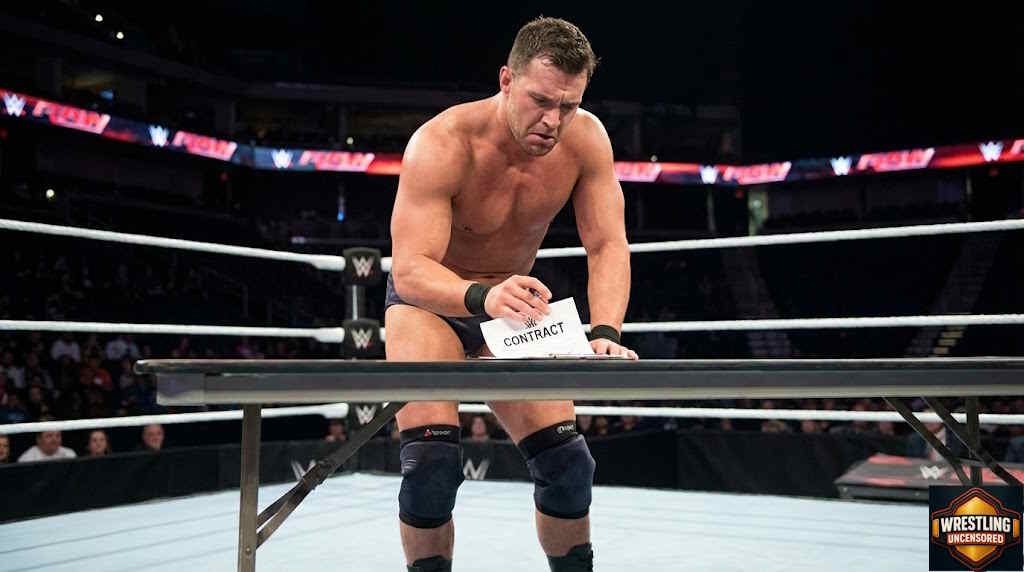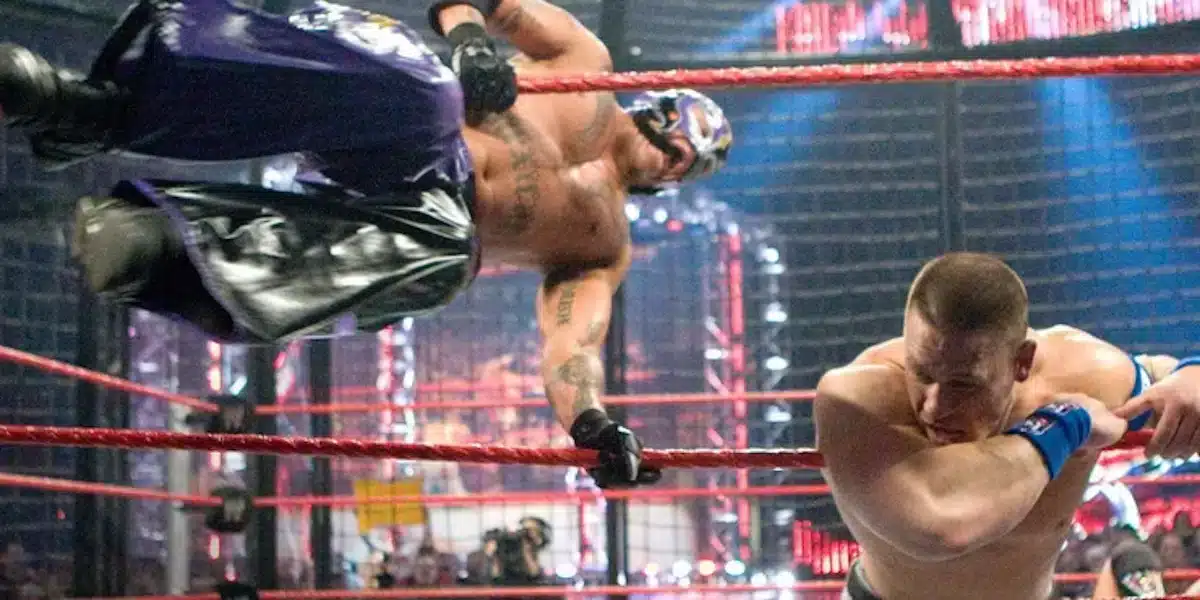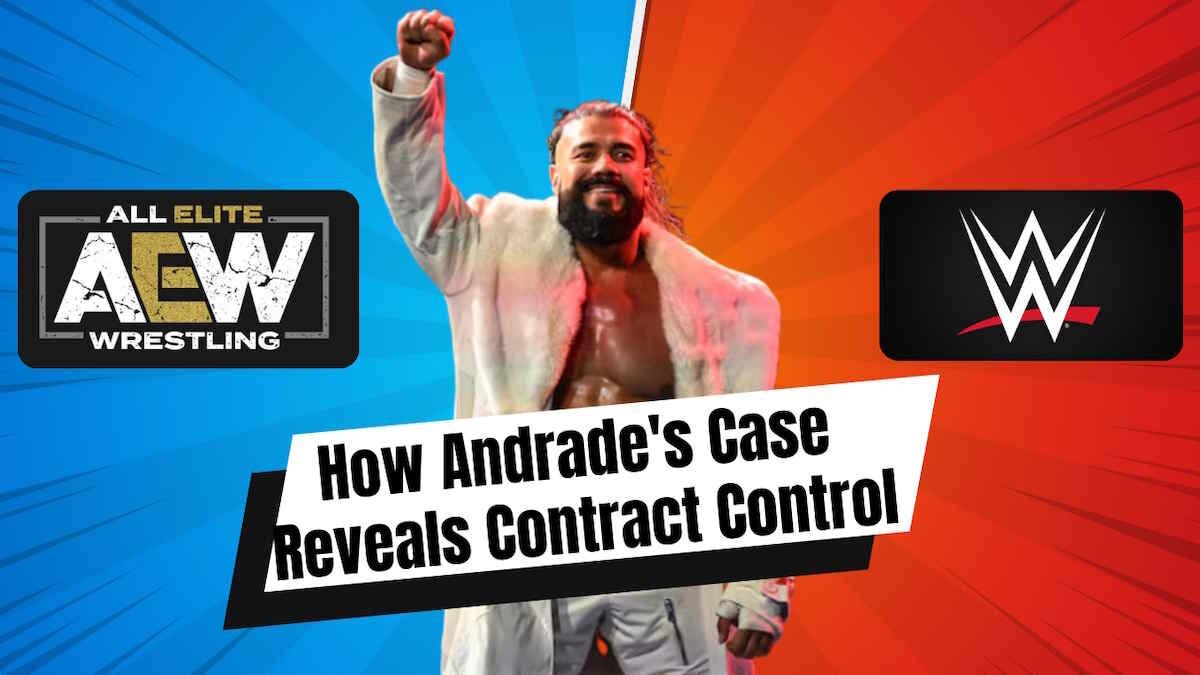When Contract Disputes Reveal Industry Power Structures
Understanding how WWE contracts actually work requires looking beyond press releases and examining real cases, such as Andrade’s current legal battle. This isn’t just another contract dispute — it’s a window into how the company systematically controls talent movement through strategic releases and non-compete clauses. When a wrestler of Andrade’s caliber finds himself fighting for fundamental contractual rights, it exposes the deeper power dynamics that define modern wrestling careers and reveals precisely how these systems actually work in professional wrestling.
The reality is that Andrade’s case isn’t unique. What makes it worth our attention is how it perfectly illustrates the machinery WWE has built to manage talent movement, and what that means for every wrestler trying to control their own career.
The Human Cost Behind Corporate Contract Control
What’s Really at Stake for Wrestlers
Here’s what matters: when WWE releases talent, they’re not just ending employment — they’re activating a sophisticated system designed to control where that person can work next. What’s often overlooked in these contract wars is the personal toll on the wrestlers themselves. Andrade isn’t just fighting for money or creative freedom — he’s fighting for the right to work in his chosen profession.
The reality is that WWE’s contract structure creates a system in which talented performers are held in limbo, unable to compete elsewhere while also denied opportunities within the company. When WWE decides to shelf a wrestler, that person’s career — and their family’s livelihood — hangs in the balance.
The Classification That Changes Everything
This isn’t about corporate greed versus artistic freedom. It’s about basic worker rights in an industry that operates under entertainment law rather than traditional labor protections. WWE operates in a unique legal space where performers are classified as independent contractors but bound by exclusive contracts. This hybrid status gives the company maximum flexibility while limiting wrestler options. They can terminate for convenience while still enforcing restrictive covenants.
What’s particularly troubling is how this system affects international talent like Andrade. These wrestlers often have fewer legal resources and less familiarity with U.S. employment law, making them more vulnerable to contract manipulation.
How WWE’s Release Strategy Actually Works
The Calculated Nature of Terminations
That’s the thing — WWE doesn’t randomly release talent. Every termination serves a strategic purpose, whether it’s cost-cutting, sending a message, or controlling market competition. Andrade’s situation reveals how the company uses selective enforcement of contract terms to maintain leverage over its entire roster.
The standard WWE non-compete runs 90 days, but that’s just the beginning. The company maintains the right to extend these periods under certain circumstances, and they’ve shown willingness to use legal pressure to enforce restrictions that go well beyond what’s written on paper. This creates a chilling effect — even wrestlers who want to leave know they’ll face a period where they can’t earn income in their profession. It’s a powerful deterrent that keeps talent in line.
The Financial Reality of Non-Compete Periods
During a non-compete period, released talent typically receives a percentage of their downside guarantee, usually 50-75%. That sounds reasonable until you consider that most wrestlers’ real income comes from merchandise, appearances, and performance bonuses that disappear immediately upon release.
The non-compete payment becomes a golden handcuff that’s just substantial enough to discourage legal challenges but insufficient to maintain their previous lifestyle. What’s often overlooked is how this creates a power dynamic in which wrestlers face financial pressure as they try to rebuild their careers.
WWE’s Three-Pronged Tactical Approach
This deserves attention because WWE’s contract system is one of the most sophisticated talent-control mechanisms in entertainment. The company learned from decades of territorial wrestling, where talent could jump between promotions freely, and they’ve built legal frameworks specifically designed to prevent that mobility.
The Andrade situation reveals three key tactics: extended legal proceedings that drain resources, strategic timing of releases to maximize the impact of non-compete clauses, and selective enforcement that sends messages to the entire roster. When WWE chooses to fight certain cases aggressively while settling others quietly, they’re not just handling individual disputes — they’re managing the entire talent pool’s perception of what’s possible.

Historical Precedent Shows the Pattern
The Playbook We’ve Seen Before
We’ve seen this playbook before. CM Punk’s departure involved similar legal maneuvering around non-compete enforcement. Alberto Del Rio faced comparable restrictions that prevented him from working with other major promotions. The Rey Mysterio situation from 2015 is particularly relevant — WWE extended his contract due to injury time, keeping him locked up for months beyond his expected release date. The message was clear: challenge the system, and we’ll make your life difficult.
Even during the Monday Night Wars, WWE used contract tactics to prevent talent from jumping to WCW during critical periods.

But Sometimes the Battles Pay Off
Here’s where it gets complicated: sometimes these legal battles actually work in the wrestler’s favor. Punk’s departure ultimately led to his success in AEW, and Mysterio eventually received his release on favorable terms. The key is having the financial resources and legal support to fight back.
What’s different now is the landscape. With AEW providing legitimate competition and independent wrestling offering more viable career paths, WWE’s control mechanisms face real challenges. The company has responded by making their legal tactics more aggressive, not less.
The Broader Impact on Wrestler Rights
The Psychological Control Factor
Here’s the reality that extends beyond any individual case: WWE’s approach to contract enforcement affects every wrestler in the company, not just those involved in disputes. When talent sees colleagues facing extended legal battles and restricted earning opportunities, it influences every contract negotiation and career decision.
The psychological impact matters as much as the legal one. Wrestlers start making decisions to avoid WWE’s displeasure rather than to maximize their own opportunities. That’s exactly what these systems are designed to accomplish — control through deterrence rather than confrontation.
This deserves attention because it affects every wrestler on the roster. Contract terms that seem reasonable during the honeymoon phase of signing become restrictive when relationships sour. Andrade’s willingness to fight publicly encourages others to examine their own situations more critically.
My Bold Prediction: A Two-Part Transformation
The Legal Victory and Industry Shift
Here’s my specific prediction, and I might be wrong about this, but I’m calling it: Andrade will not only win his legal battle but will do so in a way that forces WWE to modify their standard contract language. The combination of increased scrutiny of wrestler rights and competitive pressure from AEW creates conditions in which WWE can’t afford prolonged legal battles that generate negative publicity.
I’m calling it now — within 18 months, we’ll see significant changes to WWE’s non-compete clauses, either through legal pressure or voluntary modification to remain competitive in the talent market.
But the Real Change Comes From Economics, Not Courts
That said, here’s where the transformation gets interesting: Andrade’s case will become a watershed moment for wrestler contract rights, but not in the way most people expect. Instead of leading to immediate legal victories across the board, it will accelerate the development of alternative career paths that make WWE’s control mechanisms less effective.
The AEW Factor Changes Everything
What’s different now is that wrestlers have viable alternatives. AEW’s success proves that WWE doesn’t have a monopoly on top-tier wrestling opportunities. This fundamentally changes the power dynamic in contract negotiations and legal disputes. AEW, New Japan, and even streaming platforms are recognizing that talent frustrated with WWE’s restrictions represent valuable opportunities.
WWE knows that every high-profile contract battle risks pushing talent toward their competition. The old strategy of legal intimidation becomes less effective when wrestlers have somewhere else to go. The real change won’t come from legal precedent alone — it will come from economic pressure as wrestlers gain legitimate alternatives that make WWE’s tactics counterproductive.
What Happens Next for Wrestling’s Future
The Immediate Impact
The outcome of Andrade’s situation will send signals throughout the wrestling industry about how far companies can push the limits of talent control in the current environment. But here’s where I could be completely wrong: legal victories don’t always translate to practical change in wrestling. WWE has deep pockets and experienced legal teams. They might choose to make an example of Andrade to discourage future challenges.
The industry has a long history of finding new ways to maintain existing power structures even after losing specific battles. But the long-term trend favors wrestler rights, even if individual battles get messy.
The Bigger Picture Beyond One Contract
What happens with Andrade will ripple through the entire industry. If he succeeds, it opens the door for other wrestlers to challenge restrictive contract terms. If WWE prevails, it reinforces their control over talent movement.
Either way, this case highlights the need for better legal protections for professional wrestlers. The current system, where performers have contractor status but employee restrictions, serves neither the wrestlers nor the fans who want to see the best talent compete freely.
What’s certain is that this case represents more than one wrestler’s career dispute. It’s a test of whether the traditional wrestling business model can survive in an environment where talent has more options and a greater willingness to fight for those options.
The human cost of these battles — the stress, financial pressure, and career uncertainty — deserves recognition regardless of how the legal proceedings unfold. Wrestling’s evolution toward treating performers as true independent contractors rather than controlled assets depends on cases like this one, and the courage of individuals willing to challenge systems that have operated unchecked for decades.
The wrestling industry is at a crossroads. Andrade’s legal war isn’t just about one man’s contract — it’s about the future of wrestler rights in an evolving entertainment landscape.
Join Dave Simon and Pro Wrestler “Genesis” Johnny North Fridays live on YouTube, Rumble, Twitch, X (formerly Twitter), Kick, and DLive for Wrestling Uncensored.


